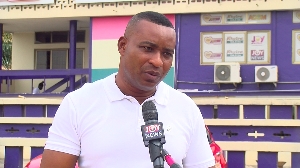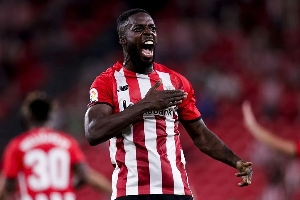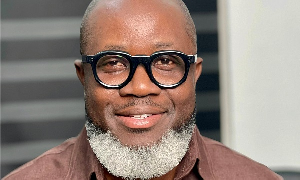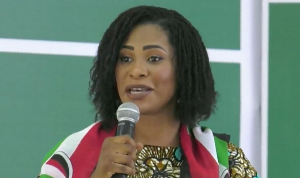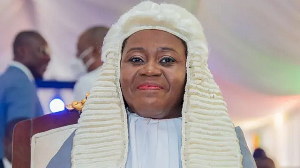It is an established fact that team working is often associated with conflicts or fragmentations, competing priorities, arbitrary divisions of responsibility, inconsistent policies, wasteful resources and unshared boundaries (Hannigan, 1999).
Being a student and unwearied enthusiast of conflict theory and resolution, I have been scoffing at the numerous suggestions from the well-meaning Ghanaians that the current impasse in the Electoral Commission should be resolved through alternative dispute resolution.
I am afraid, alternative dispute resolution is not possible on this occasion, as the cleavage in the Electoral Commission is so deep and has gone past the stage that could be reversed through conflict resolution process or technique. The possible remedy, though, will be through conflict management.
Team conflict is an interpersonal disagreement between members of a team or group. In fact, conflict more often than not, impacts negatively on team performance.
Team conflict may arise when the balance between perceptions, goals, or/and values of the team is upset and members aren’t willing to work together towards achieving the shared goals and values.
Even though each team or group member has his/her own interests and values, a team member is obliged to follow values of the team. However, when there is dissonance between the values, needless or irrelevant cleavage may then emerge.
Team conflict could be either functional or dysfunctional. Functional conflicts are disagreements that do not affect team performance significantly, and, the team often remains functional and able to achieve the desired results.
On the other hand, dysfunctional conflicts are those cleavages that arise between team members that often disrupt teamwork and prevent team members from achieving shared goals.
More importantly, team conflicts or divisions are not limited to a particular team or group. Indeed, , conflict is rather a team or group phenomenon, which may be resolved through efficient management.
It must, however, be noted that working collaboratively and sharing new knowledge across teams can be a complicated and challenging process (Wenger, 1998; Gilley and Kerno, 2010).
However, in as much as group or team working can be a challenge, there is an established recognition of the importance of frameworks, interpretive models, systems and flexible methodologies in enabling groups or specific teams to identify common values and learn to handle challenges and work collaboratively and systematically to achieve a common goal (Checkland & Poulter, 2006).
Take, for example, in spite of the seeming challenges associated with team working, some optimists insist that in the presence of periodic on-job training, effective interactions, information sharing, mutual respect and understanding, the team can work synergistically towards achieving a common goal (Reeves et al. 2009).
It is true that a team is a very special form of group. Members are required to cooperate and voluntarily coordinate their work.
Needless to say that within the team, there must be a high level of cohesion, participation, support and shared values, and, in order to reach this important stage of maturity, teams need to develop and blossom.
Some experts however posit four pillars of an effective integrated team as: degree of integration, team membership, team process issues, and team management (Øvretveit 1997).
In a great scheme of things, the dynamics of a team are highly complex, hence getting diverse teams such as the Electoral Commission to work collaboratively and effectively may require a lot of team interactions, mutual respect and understanding ,effective communication and information sharing.
Take, for example, Hoegl (2005) posits that the quality of teamwork can comprehensively be assessed by considering six thematic factors of the collaborative work process: communication, coordination, and balance of member contributions, mutual support, effort, and cohesion.
Suffice it to state that the six teamwork quality facets espouse elements of both task-related and social interaction within teams (Cummings, 1978; Hoegl et al., 2003).
More importantly, Baker, Day, & Salas, (2006) observe that service delivery is a joint effort by team members, whose tasks, interaction and collaboration need to be synchronised.
Similarly, team collaboration has been identified as a shared aims, interdependence, shared decision-making efforts and a collegial and equal relationship between members (D’Amour, Ferrada-Videla, San Martín-Rodriquez, & Beaulieu, 2005).
What is more, the absence of coordination, relevant resources and lack of operational integration produce conflicts, wasteful and inefficient services (Hannigan, 1999).
In fact, team working is similitude to “harnessing a crab, a swan, and a pike onto a single wagon and expecting them to move” (Tubin and Levin-Rozalis, 2008).
As a matter of fact and observation, the aforementioned creatures have dissimilar adaptations. And, obviously there is no propinquity between them. In other words, they differ in nature and more so culturally incongruous.
So in order to get them “moving” together smoothly, they must first learn how to do that. In other words, they must undergo group process to unlock the inherent barriers.
To put it metaphorically, tying “a swan, a crab and a pike” and tasking them to “move” together seamlessly without tackling the inherent barriers would be an uphill task by all means. For it is quite apparent that they would not be able to communicate properly with one another without breaking the communication barriers.
Patently, there are inequalities between them, although the three creatures all have some kind of sea life knowledge. However, they have differing adaptations and cannot work together without useful assimilation.
Take, for instance, a swan can fly, a crab can only probably swim and crawl. On the other hand, a pike cannot fly but may swim adequately. In essence, they may not understand each other, hence the need to assimilate or to undergo group process.
In a way, the preceding scenario explains the inequalities and the seeming challenges that confront professional team members like the Electoral Commissioners who seek to work collaboratively.
In sum, despite the seeming exigencies, team members in high calibre such as the members of the Electoral Commission, must endeavour to develop into effective teams in order to be able to coordinate individual activities for pragmatic outcomes.
Opinions of Thursday, 27 July 2017
Columnist: Kwaku Badu



